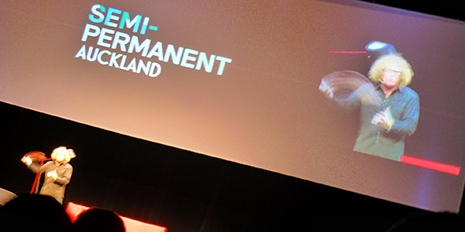
As a first time attendee to SemiPermanent my only expectation was to see some great artists making a living out of doing what they love. And some good artworks, designs, creations. And good coffee.
They didn't disappoint.
DAY 1
First up was Ian Wharton from AKQA. His talk was themed around Youthful Thinking, and was definitely one of my favourites from the event. His talk was derived from his recently published book, Spark the Fire, as a guide to being more creative. He not only shared samples of his work but also insights on what it takes to be creative.
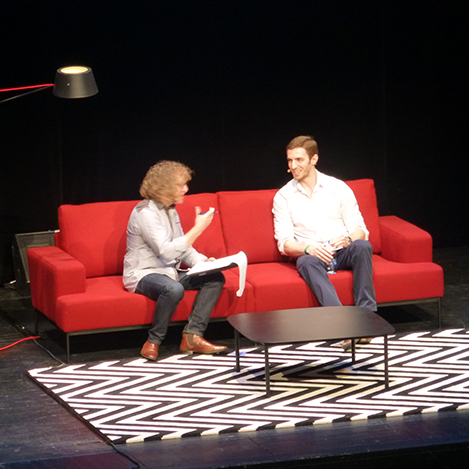
Ian Wharton chats with host Te Radar
One of these insights is to embrace the ridiculous. Ian wanted to remind us that in order to be creative, you need to go back to your childhood, when it was ok to be ridiculous, to daydream, fantasize, explore, and learn. Through exploring and trying new things, you’ll challenge yourself and push the boundaries of your imagination and creativity.
My favourite takeaway: Do one thing and do it well. Do what imagination demands and do it passionately.
Tiffany Boszik's presentation was a broad overview of her work; highly detailed nature paintings on plywood. I found her works quite interesting, though wish she had gone into more details about her process and inspirations. Having grown up taught by observing Bob Ross, David Attenborough & Audubon books, she is lucky enough to be able to follow her ornithologist husband through the field. She makes drawings from her observations, taking down details of the creatures and plants around her to use later in studio. This is where I wish she had elaborated - it was obvious that some of her pieces had a lot of meaning behind them, what she called emotional metaphors rather than scientific record, but didn't elaborate on how she translated this through the works.
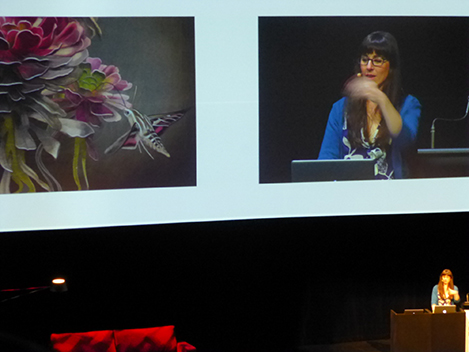
Ashley Gilbertson's talk was the most emotional for me, and really dug deep into his work. The New York Times war photographer first shared photos from the field in Iraq, from one of his most recognised shots of a soldier sliding down the banister of an empty mansion (below), the 'funny shot' that made his career. However he eventually became unsatisfied with the merely 'typical' shots of a country at war, of "some dusty guy kicking in a door." He wanted to humanise war for those who had never experienced it, so he continued his work at home in the US. This is where things really got heavy.
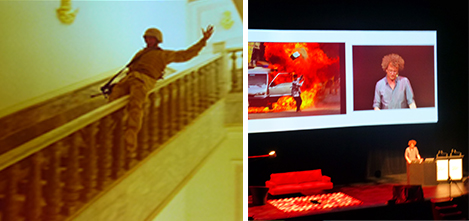
Gilbertson shot a series visiting the homes of fallen soldiers. He photographed their empty bedrooms, and shared the stories that he learned from their families in a series titled Bedrooms of the Fallen. He shed a tear while recalling the emotion captured during his visits, from rooms that had been left untouched since the soldier last slept there, to unwashed laundry that mom couldn't bear to clean because "it still smells like him."
The follow up to Gilbertson's deep and emotional recollections was unfortunate, if only for lack of break time to recover from the intense stories. Nevertheless, fashion designers Augustine Teboul were well presented. With a unique mixture of fabrics, the techniques the German/French pair used were quite inspiring, even in all black, and considering the amount of handiwork that goes into each piece compared with their success putting at least 30 garments on the runway each season.
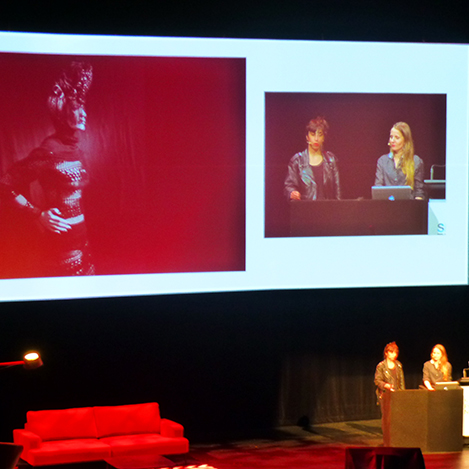
Matt Willey was another graphic designer that I enjoyed, due to his honest approach to his life's work, down to the fact that he never wanted to be a designer, and that his best work (below left, spread on Nietzsche) was done while he was drunk (and perhaps not even possible sober...) Not afraid to drink on stage or mention business he had personally driven into the ground or a mag launched from his drinking habit. He had a great portfolio and fine attention to detail, not to mention his history of great publications, from the Independent newspaper redesign to start up magazines Port and Zembla Magazine. He was one of the only presenters to show his process - the unfinished disasters as well as the celebrated finished products, another aspect of his honesty that shone through his presentation. I'd love to have a beer with him one day.
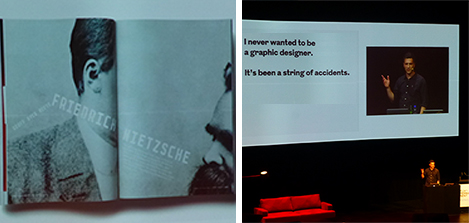

Finishing off Day 1 was Abbott Miller from Pentagram, one of the biggest design firms out of New York. An impressive portfolio of clients followed him to Auckland, though he chose to focus on the work for which he has the most passion. What started as a commission for a single donor turned into ten years of works across varying media from performance and video to books and magazines, all about dance.
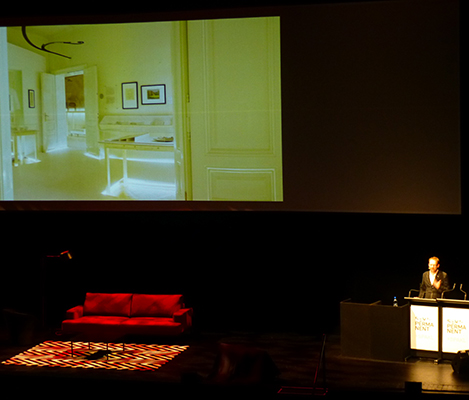
DAY 2
Day 2 kicked off, and also fantastically ended, with a bang (though the end was more literal... keep reading!)
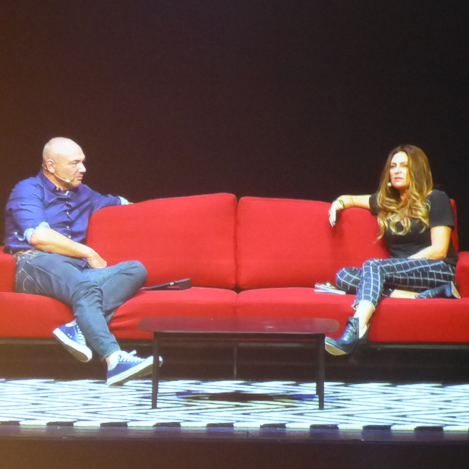
Nikki Caro took her time on stage on the couch, chatting with a friend about her work, and was casually inspiring. She gave away a lot about the way she works and dove deep into her process when making a movie. Best known for Whale Rider, she talked more about an American Midwest based movie, North Country. For this film, set in Minnesota mining town, she took a similar approach that she did to Whale Rider, in that she got to know the real people behind the story before jumping behind the camera. She shared a lot of emotion about her experiences, saying that she is often more concerned with her own performance than that of the actors. She shared a story about pushing lead actress Charlize Theron to expose her raw emotions, and hives even, when intimidated during a high voltage scene. She also gave us a sneak preview of another cultural film, an upcoming Disney flick McFarland with Kevin Costner, which again digs into cultural boundaries and shares raw emotion and 'real people' on screen.
Following Nikki's casual conversation was a much more structured talk - Nat Cheshire began reading off his screen, but rather than a dull & lifeless talk, he shared a poetic recap of the rebuilding of Auckland. The architect did more than share a portfolio or show buildings, but shared the emotions and hardships, the surprises and sleepless nights to pump life into Britomart.
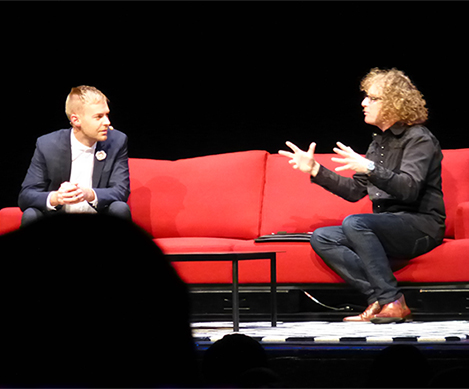
Nat debriefing with Te Rader after his talk.
He built bars on Friday nights that had to be as good at 1pm as they were at 1am; focused on the quality of an experience above all other things - and has achieved it with restaurants like Mexico and Milse - both of which I had the pleasure to experience the night before, both of which have their own mood and life beyond the streets of Auckland. It's hard to relate the feeling of his talk, so you can watch it for yourself (embedded at the bottom of the page). One of the only released talks from Semi, it's not short, but it is worth it.
Luckily this heavy talk (and standing ovation) was followed by a lunch break, and afterwards a complete departure from everything we had seen so far.
On stage was Josh, picked from the audience, sitting behind a laptop and a table with electrodes strapped to his face. By his side, Daito Manabe, face covered with the same kit, the conductor. The lights went down, the music came up, and their faces started twitching, dancing to the music.
Daito is an interaction designer, but not in the traditional sense. A technology wiz, his works range from a light race tribute for Honda to digital translation of dance moves for a pop girl group, digital manipulation turned art. He also designs ads and uses this money to fund his art, ever exploring and finding new ways to use technology.
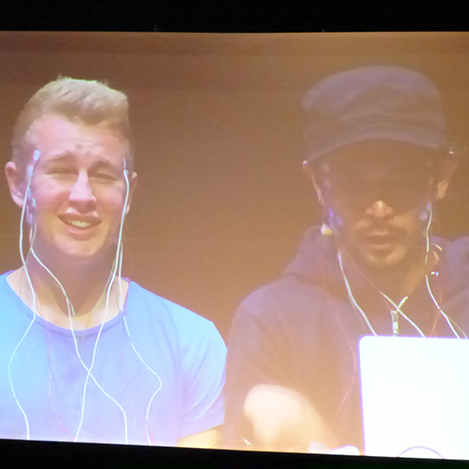
Josh & Daito look relieved once the facial manipulation finished.
Continuing the high tech trend was agency Framestore, whose most famous work is the 2013 British-American 3D epic science fiction thriller film Gravity. Amazingly the only real life footage used for the entire movie is the actors’ faces - the rest is digital graphics. They covered works from the five pillars of their company: Concept, Design, Integrated Advertising, Digital, and Film Visual Effects. Works range from bringing Audrey Hepburn back to life for Galaxy chocolate and animated Beats characters to a digital Game of Thrones experience using the Oculus Rift, to countless movie credits for Batman, Robocop, Ironman - pretty much anything with an impressive explosion. My favourite is their visual work with textiles, of all things, such as action sequences for 47 Ronin, recently added to my must see list.
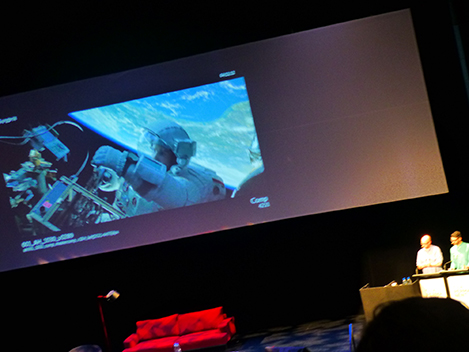
A scene from Gravity.
I don't have much to say about the next talk, whether it was due to lack of preparation I'm not sure, but Mathias Augustyniak from M/M Paris, possibly one of the more anticipated speakers at the event, was entirely underwhelming. Showing a recently published book, The M to M of M/M he simply flicked through the pages of his PDF. It could have been quite interesting, as some of the works were quite detailed and included works for Bob Dylan, Bjork, and Vogue, but it simply wasn't.
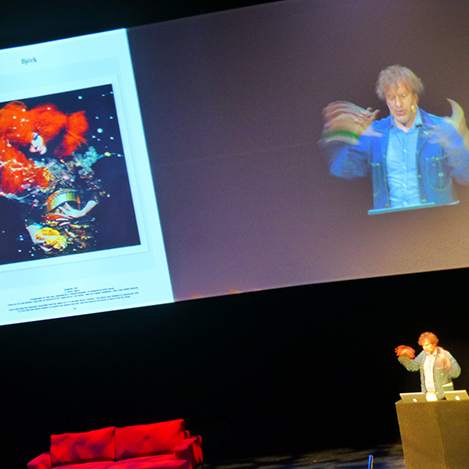
Finishing off the event was a true performance. Mike Mizrahi, a theatre mastermind, showed off the work for Inside Out Productions, which he started with his wife in England and eventually brought to New Zealand. His story ranged from a busted old flat and dancing in plastic rubbish bags, to large scale works in a flooded quarry (which led to a life-long love of flooded spaces). After he closed the doors on his production company, the admission of which still brings a tear to his eye, he explored new territory, creating opening sequences for Warriors rugby games and the opening fireworks show for the 2011 Rugby World Cup. Also for RWC he created a travelling installation inside a rugby ball, showcasing New Zealand, which travelled around the world. With all the variation of his portfolio, and through the ups and downs, he found that he always gained success with the mantra: "Say Yes."

The talk, as I said, literally ended with a bang - out marched his favourite Auckland marching troupe to perform with a blast of glitter cannons to finish. This perfectly summed up his other life lesson - "Always End Well."
Nat Cheshire's artful talk has been posted on Vimeo (36 minutes, but worth it!)
Do Not Rest - Nat Cheshire from Semi Permanent on Vimeo.
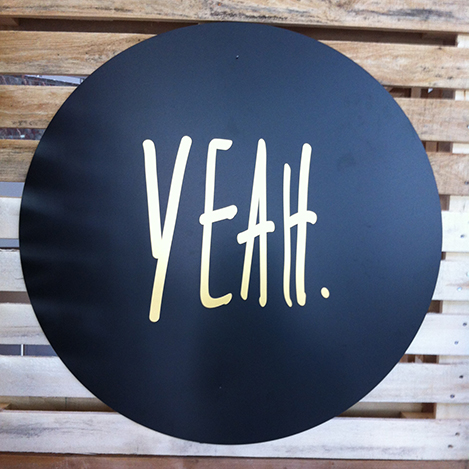
A taste of 2014 Semi-branding
Comments
Post new comment